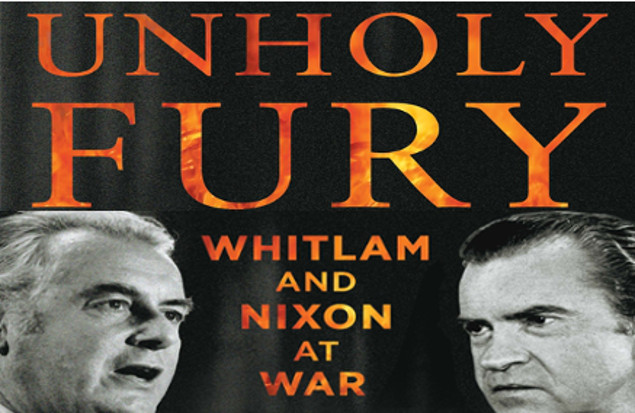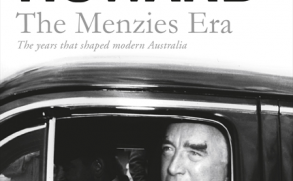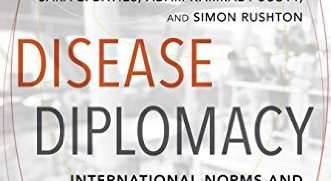Unholy Fury: Whitlam and Nixon at War

Long after the dust of catastrophic events has settled and the reports are written, historians come to pick through the rubble, finding fragments to throw at received interpretations. James Curran is such a historian. Having earned extensive access to grants, to national archives in Washington, London, and Canberra and to newly declassified documents, he has produced a thoroughly documented, yet highly readable, study that challenges past and present views of the ANZUS alliance. It comes only a few months after Malcolm Fraser’s Dangerous Allies and the two books should be read together.
Beginning in 1953 and ending in 1975, with concluding comments on what followed, Dr Curran’s chosen period spans what might be seen as Australia’s decades-long adolescence, when loss of trust in parental protection turned into defiance of ageing adults’ wishes and then into threats about leaving home. For Australia in 1972, it was time: Prime Minister Whitlam responded to the electorate’s impatience for change, completed the withdrawal from Vietnam, questioned the scope of the alliance and demanded accountability from the US about the bases. President Nixon, in contrast, still fighting the Cold War and desperate to keep allied forces in Vietnam, ostracised Whitlam as a dangerous Socialist – even though they both recognised China. As Dr Curran shows, they both oscillated: Whitlam between restraint and outrage, while seeking to remain diplomatic and Nixon between ignoring and confronting Australia’s new leader, while vilifying him to others.
Some had not noticed that it was time. Antiquated ideas about Australia prevailed in the State Department and the White House, while the advice of better-informed US officials was often ignored. Equally out-of-date were those Australians who believed that the US would always defend us, which, as Nixon’s Guam Doctrine asserted, it would not unless it was in America’s interests. The US threatened to back away from the alliance, while Whitlam sought to redefine it in terms of greater self-reliance.
Central to the strained relationship were the CIA and the bases in Australia. The ALP left would happily have closed Pine Gap but for the US, the bases were indispensable. Whitlam demanded an admission about the CIA’s role in the bases and accused the Opposition of being subsidised by the CIA. Days later, the Governor-General dismissed him. Brian Toohey, John Pilger, Christopher Boyce and others have detected dirty tricks in the dismissal, involving Sir John Kerr and Defence Secretary Sir Arthur Tange, all of which Vietnam historian Peter Edwards denies. Whitlam’s statement in Parliament on 4 May 1977 on how intelligence services collaborate behind their governments’ backs deserves a contemporary re-reading. But readers hoping for a definitive answer from Dr Curran’s book about the dismissal will be disappointed. For all the material at his disposal and with Whitlam, Fraser, Kerr and Tange all dead, only conspiracy theories are left. What Dr Curran calls the ‘dilemmas of divergence’ continue.
James Curran, Unholy Fury: Whitlam and Nixon at War, Melbourne University Press, South Carlton, 2014
Dr Alison Broinowski is a Research Affiliate at the Australian National University and former Australian diplomat. Her areas of academic endeavor include Australia-Asia relations, Australia and the United Nations, the Australian-American alliance, new journalism and public and cultural diplomacy.





